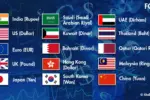KATHMANDU: Pakistan’s heavy reliance on China has resulted in massive debt and dwindling cash reserves.
Perhaps, Pakistan might have never anticipated that its alliance with China would end up in massive debt.
The US $60 billion handouts from China in 2013 under the China-Pakistan Economic Corridor (CPEC), and the Belt and Road Initiatives (BRI) saw nothing tangible in terms of the economy even though Pakistan had assumed that it is drifting towards Communist China would, perhaps, be much fruitful than being an ally of the United States.
Now that Pakistan is already debt-ridden, it urged China to that it needs one more year to pay back the debt that Pakistan had borrowed from China in 2020.
Prime Minister Imran Khan, in July 2021, wrote a letter to his Chinese counterpart Li Keqiang requesting the latter to give another 12 months to pay back the loan at an interest rate of one percent.
The country’s debt problems had already increased when China, Pak’s all-time ally, denied restructuring US$ 3 billion in liabilities.
In fact, Pakistan had urged China to what it said “forgive debt liabilities” owed to China-funded projects under the CPEC.
According to Bloomberg, Pakistan added US$17 billion to its external debt, totaling US$113 billion between 2018 and 2020.
So much so that PM Khan even issued a public plea for debt assistance when the country’s economy was badly affected by the Covid pandemic.
Pakistan has to pay back about US$ 1.3 billion to Chinese power producers at a time when Chinese investors have repeatedly put pressure on the Pak government to address issues of existing project sponsors in a bid to attract new investment.
Reports suggest a number of projects are currently stuck in a circular trap of around US$ 14 billion in Pakistan due to which several Chinese projects are undergoing problems in securing insurance of the bank loans in China.
In fact, Islamabad’s existing foreign currency reserves have been built through borrowing, and most of them are through Chinese loans.
Moreover, the country’s reserves fell sharply over US$ 1.5 billion in January this year mainly due to external debt servicing.
It should be noted that Pakistan received a loan of US$3 billion in December 2021.
According to Asia Times, Chinese loans have fueled a buildout of Pak’s power generation.
Now that, if the current debt repayment terms persist, Pakistan’s overall power sector liability may increase to more than US$ 9.4 billion by the end of 2023, according to the report on Asia Times.
It said that official estimates indicate that the country’s energy-related debts will rise to US$ 17.5 billion under current BRI terms and conditions.
The BRI lending to Pak has become a “debt trap”.
The CPEC, meanwhile, has burdened Pakistan with debt paving the way for China to use its “debt-trap diplomacy” and gain access to the strategic assets.
Therefore, Pakistan is already at high risk due to the debt from China.
(Source: Bloomberg/Asia Times/Agencies)









Comment